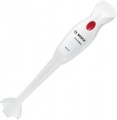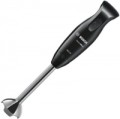Power
The rated power of the device, in fact, is the power of the engine installed in it.
The higher this indicator, the more performant this model is, the more suitable for “heavy” work and the more applications can be provided in the design. For example, in the case of mixers (see “Appliance type”), a power of up to 250 W is considered good for liquid products; for more solid tasks, like kneading tough dough, you should pay attention to more powerful models. Detailed recommendations on optimal power can be found in special sources.
Note that powerful devices are usually equipped with more durable nozzles that can withstand high loads.
Blending arm material
The blending arm consists of a tube with a bladed knife located at one end. Specified for
immersion blenders(see “Device type”) and other devices equipped with the appropriate attachment (see “Attachments”). Usually there are such options:
—
Plastic. Plastic is a popular material for blending arms because it is lightweight, inexpensive, and easy to manufacture in various colors and even transparency. It is susceptible to scratches and less strong than metal, but this is not critical as blending arms are not subject to significant stress. Overall, plastic is a convenient and widely used material.
—
Metal. Metal blending arms are strong and scratch-resistant, giving them a solid appearance. However, they are heavier and more expensive than plastic ones, making them more commonly used in premium blender models where design is as important as functionality.

